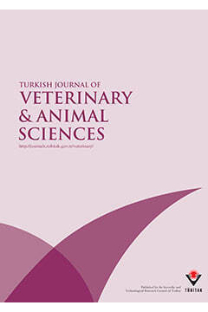Determination of the Microbiological Quality of Some Dairy Desserts
This study was designed to demonstrate the microbiological qualities of cream pastries and puddings obtained from five different confectioneries in Van. A total of 175 samples, consisting of 100 pudding samples (sütlaç 25, keşkül 30, supangile 25, kazandibi 20) and 75 cream pastries (butter-cream 25, chocolate-cream 25, fruit-cream 25), were analysed. The drop plate technique was used to determine the numbers of total anaerobic bacteria, enterobactericeae, lactobacilli, pseudomonas and yeasts/moulds, and the spread plate technique was used to determine the total number of micrococci/staphylococci. The mean numbers of total aerobic bacteria were found to be 2.16, 3.18, 4.65, 2.75, 6.08, 5.96 and 5.76 cfu/g, and the mean numbers of enterobactericeae, which are important in terms of the microorganism hygiene index, were found to be 0.48, 2.18, 3.24, 0.71, 4.85, 4.77 and 4.03 cfu/g in puddings (sütlaç, keşkül, supangile, kazandibi) and cream pastries (butter-cream, chocolate-cream, fruit-cream) respectively. Although the mean numbers of lactobacilli in puddings were found to be 1.08, 2.68, 4.15 and 2.17 cfu/g respectively, they were around 5 cfu/g in cream pastries. The mean numbers of pseudomonas and yeasts/moulds in puddings (sütlaç, keşkül, supangile, kazandibi) were found to be 0.31, 1.58, 2.86 and 0.56 cfu/g and 0.64, 1.32, 3.38 and 1.06 cfu/g respectively, and around 4 cfu/g in cream pastries. The mean numbers of micrococci/staphylococci in puddings were found to be 1.56, 2.34, 3.10 and 1.48 cfu/g respectively and around 4 cfu/g in cream pastries. It was concluded that the hygenic qualities of dairy desserts were poor due to both production and sale conditions. It was also concluded that periodic checks are necessary for improving the hygienic quality of dairy desserts.
Determination of the Microbiological Quality of Some Dairy Desserts
This study was designed to demonstrate the microbiological qualities of cream pastries and puddings obtained from five different confectioneries in Van. A total of 175 samples, consisting of 100 pudding samples (sütlaç 25, keşkül 30, supangile 25, kazandibi 20) and 75 cream pastries (butter-cream 25, chocolate-cream 25, fruit-cream 25), were analysed. The drop plate technique was used to determine the numbers of total anaerobic bacteria, enterobactericeae, lactobacilli, pseudomonas and yeasts/moulds, and the spread plate technique was used to determine the total number of micrococci/staphylococci. The mean numbers of total aerobic bacteria were found to be 2.16, 3.18, 4.65, 2.75, 6.08, 5.96 and 5.76 cfu/g, and the mean numbers of enterobactericeae, which are important in terms of the microorganism hygiene index, were found to be 0.48, 2.18, 3.24, 0.71, 4.85, 4.77 and 4.03 cfu/g in puddings (sütlaç, keşkül, supangile, kazandibi) and cream pastries (butter-cream, chocolate-cream, fruit-cream) respectively. Although the mean numbers of lactobacilli in puddings were found to be 1.08, 2.68, 4.15 and 2.17 cfu/g respectively, they were around 5 cfu/g in cream pastries. The mean numbers of pseudomonas and yeasts/moulds in puddings (sütlaç, keşkül, supangile, kazandibi) were found to be 0.31, 1.58, 2.86 and 0.56 cfu/g and 0.64, 1.32, 3.38 and 1.06 cfu/g respectively, and around 4 cfu/g in cream pastries. The mean numbers of micrococci/staphylococci in puddings were found to be 1.56, 2.34, 3.10 and 1.48 cfu/g respectively and around 4 cfu/g in cream pastries. It was concluded that the hygenic qualities of dairy desserts were poor due to both production and sale conditions. It was also concluded that periodic checks are necessary for improving the hygienic quality of dairy desserts.
